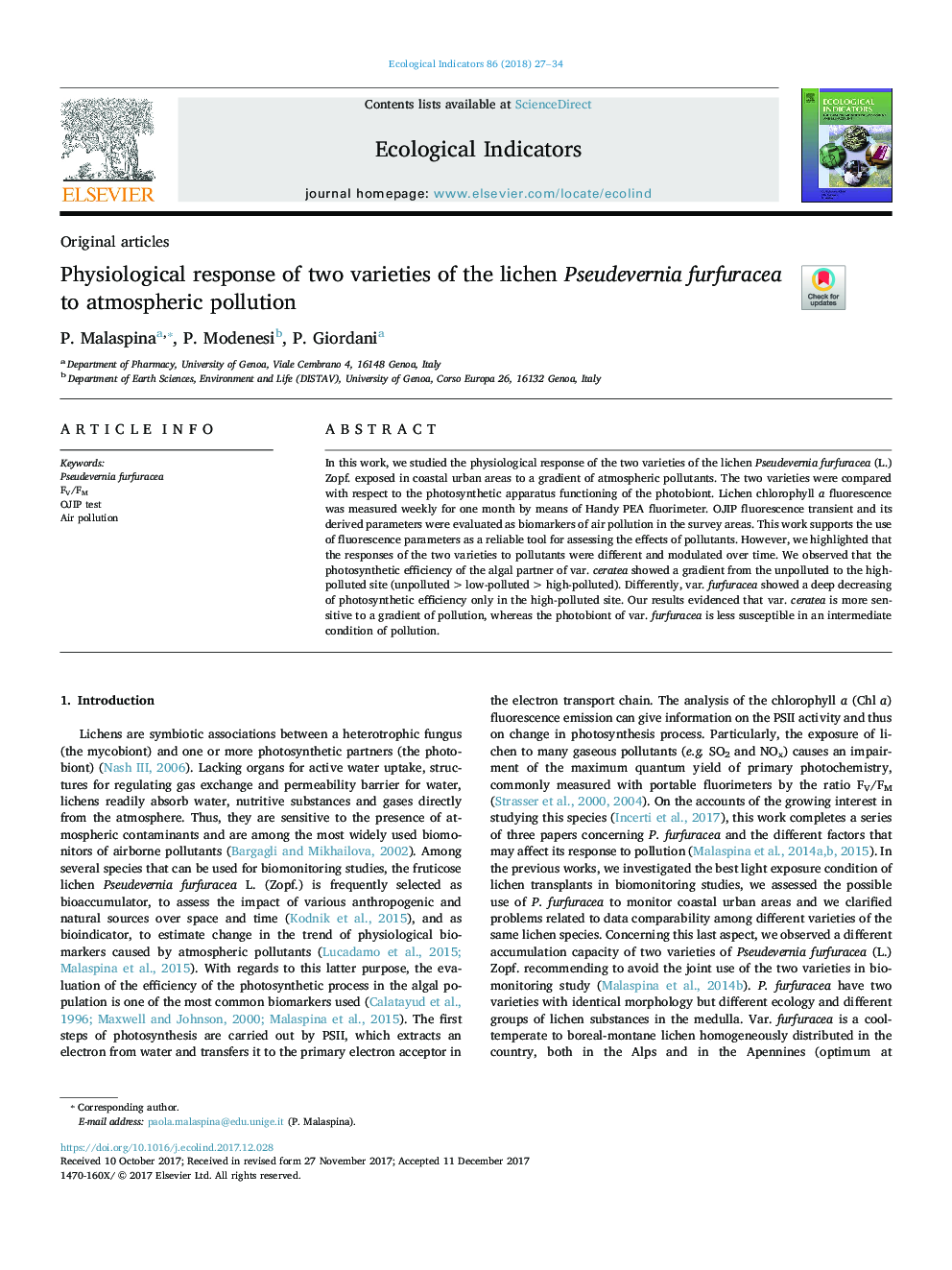| Article ID | Journal | Published Year | Pages | File Type |
|---|---|---|---|---|
| 8845616 | Ecological Indicators | 2018 | 8 Pages |
Abstract
In this work, we studied the physiological response of the two varieties of the lichen Pseudevernia furfuracea (L.) Zopf. exposed in coastal urban areas to a gradient of atmospheric pollutants. The two varieties were compared with respect to the photosynthetic apparatus functioning of the photobiont. Lichen chlorophyll a fluorescence was measured weekly for one month by means of Handy PEA fluorimeter. OJIP fluorescence transient and its derived parameters were evaluated as biomarkers of air pollution in the survey areas. This work supports the use of fluorescence parameters as a reliable tool for assessing the effects of pollutants. However, we highlighted that the responses of the two varieties to pollutants were different and modulated over time. We observed that the photosynthetic efficiency of the algal partner of var. ceratea showed a gradient from the unpolluted to the high-polluted site (unpolluted > low-polluted > high-polluted). Differently, var. furfuracea showed a deep decreasing of photosynthetic efficiency only in the high-polluted site. Our results evidenced that var. ceratea is more sensitive to a gradient of pollution, whereas the photobiont of var. furfuracea is less susceptible in an intermediate condition of pollution.
Related Topics
Life Sciences
Agricultural and Biological Sciences
Ecology, Evolution, Behavior and Systematics
Authors
P. Malaspina, P. Modenesi, P. Giordani,
